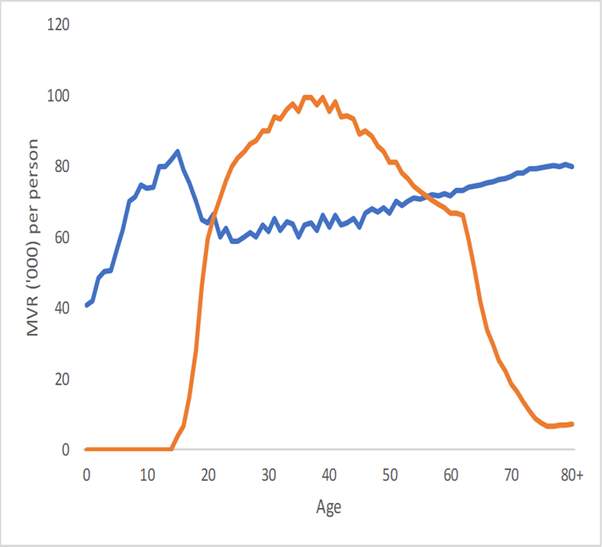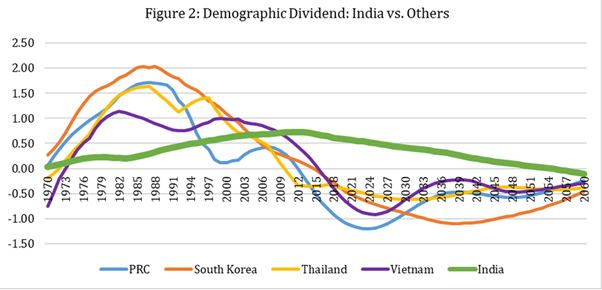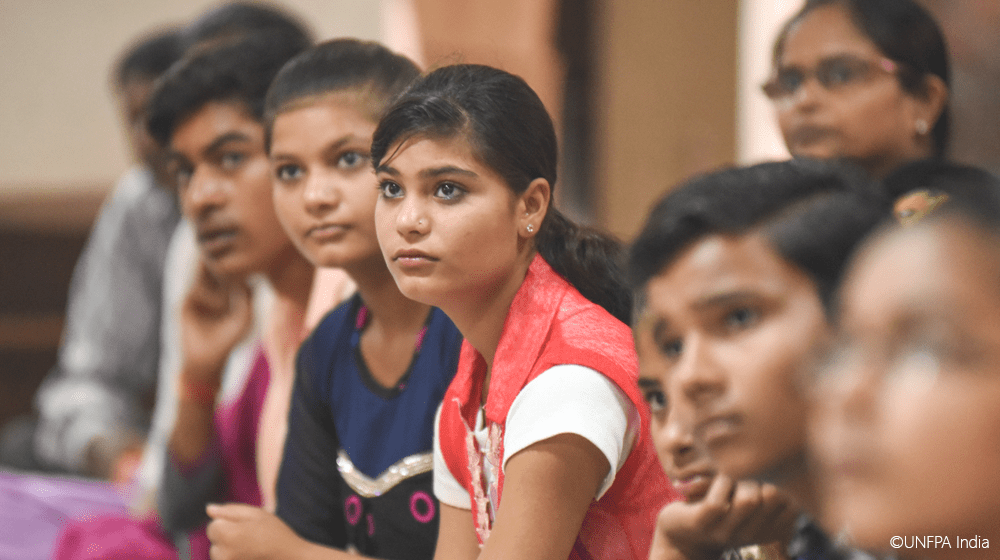India has a unique opportunity to develop and grow richer before ageing sets in
A nation’s growth requires the productive contribution of all segments of society, particularly the children and the youth, who need to be provided opportunities for self-expression. Household and national investments in children and youth yield long-term returns in terms of high productivity of the economically active population till they enter the elderly cohort.
Fertility decline
As fertility declines, the share of the young population falls and that of the older, dependent population rises. If the fertility decline is rapid, the increase in the population of working ages is substantial yielding the ‘demographic dividend’. The smaller share of children in the population enables higher investment per child. Therefore, the future entrants in the labour force can have better productivity and thus boost income. With the passage of time, the share of the older population rises and that of the working age population begins to fall and hence the dividend is available for a period of time, ‘the window of demographic opportunity’.
However, realisation of the benefits of potential demographic dividend is not automatic and thus presents many challenges. Without proper policies, the increase in the working-age population may lead to rising unemployment, fueling economic and social risks. This calls for forward-looking policies incorporating population dynamics, education and skills, healthcare, gender sensitivity, and providing rights and choices to the younger generation.

With falling fertility (currently 2.0), rising median age (from 24 years in 2011, 29 years now and expected to be 36 years by 2036), a falling dependency ratio (expected to decrease from 65% to 54% in the coming decade taking 15-59 years as the working age population), India is in the middle of a demographic transition. This provides a window of opportunity towards faster economic growth. India has already begun to get the dividend. In India, the benefit to the GDP from demographic transition has been lower than its peers in Asia and is already tapering. Hence, there is an urgency to take appropriate policy measures.
Forward-looking policies
Countries like Singapore, Taiwan and South Korea have already shown us how demographic dividend can be reaped to achieve incredible economic growth by adopting forward-looking policies and programmes to empower the youth in terms of their education, skills and health choices. There are important lessons from these countries for India.
The first is to undertake an updated National Transfer Accounts (NTA) assessment. Using NTA methodologies by Lee and Chen (2011-12) and M.R. Narayana (2021), we find that India’s per capita consumption pattern is way lower than that of other Asian countries. A child in India consumes around 60% of the consumption by an adult aged between 20 and 64, while a child in China consumes about 85% of a prime-age adult’s consumption. The NTA data for India needs to be updated to capture the progress made on such investments since 2011-12. State-specific NTAs need to be calculated every year and States need to be ranked for investing in the youth.
The second is to invest more in children and adolescents. India ranks poorly in Asia in terms of private and public human capital spending. It needs to invest more in children and adolescents, particularly in nutrition and learning during early childhood. Given that India’s workforce starts at a younger age, a greater focus needs to be on transitioning from secondary education to universal skilling and entrepreneurship, as done in South Korea.
The third is to make health investments. Health spending has not kept pace with India’s economic growth. The public spending on health has remained flat at around 1% of GDP. Evidence suggests that better health facilitates improved economic production. Hence, it is important to draft policies to promote health during the demographic dividend. We need more finance for health as well as better health facilities from the available funding.

The fourth is to make reproductive healthcare services accessible on a rights-based approach. We need to provide universal access to high-quality primary education and basic healthcare. The unmet need for family planning in India at 9.4% as per the latest National Family Health Survey-5 (2019-21) is high as compared to 3.3% in China and 6.6% in South Korea, which needs to be bridged.
Fifth, education is an enabler to bridge gender differentials. The gender inequality of education is a concern. In India, boys are more likely to be enrolled in secondary and tertiary school than girls. In the Philippines, China and Thailand, it is the reverse. In Japan, South Korea, and Indonesia, the gender differences are rather minimal. This needs to be reversed.
Sixth, India needs to increase female workforce participation in the economy. As of 2019, 20.3% of women were working or looking for work, down from 34.1% in 2003-04. New skills and opportunities for women and girls befitting their participation in a $3 trillion economy is urgently needed. For example, a girl who passes Class 10 needs more choices to learn skills that will help her find appropriate work. She will need safe transport to travel to work. Finding work will likely delay her age of marriage and make her participate in the economy more productively, as also exercise her rights and choices. South Korea’s female workforce participation rate of 50% has been built on i) legally compulsory gender budgeting to analyse gender disaggregated data and its impact on policies, ii) increasing childcare benefits, and iii) boosting tax incentives for part-time work. It is predicted that if all women engaged in domestic duties in India who are willing to work had a job, female labour force participation would increase by about 20%.
Seventh, India needs to address the diversity between States. While India is a young country, the status and pace of population ageing vary among States. Southern States, which are advanced in demographic transition, already have a higher percentage of older people. These differences in age structure reflect differences in economic development and health – and remind us of States’ very different starting points at the outset of the 2030 Sustainable Development Goals Agenda. But this also offers boundless opportunities for States to work together, especially on demographic transition, with the north-central region as the reservoir of India’s workforce.
Eight, a new federal approach to governance reforms for demographic dividend will need to be put in place for policy coordination between States on various emerging population issues such as migration, ageing, skiling, female workforce participation and urbanisation. Inter-ministerial coordination for strategic planning, investment, monitoring and course correction should be an important feature of this governance arrangement.
Rakesh Sarwal is a civil servant and has a Doctorate in Public Health from Johns Hopkins University; Sriram Haridass is UNFPA Representative India and Country Director Bhutan a.i. Views are personal.
_________________________________________________________________________
Published in The Hindu


